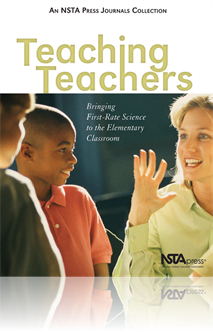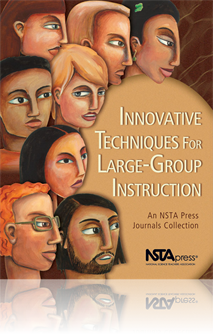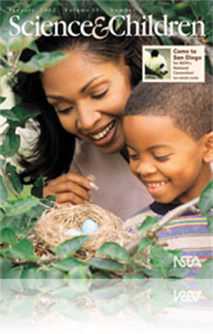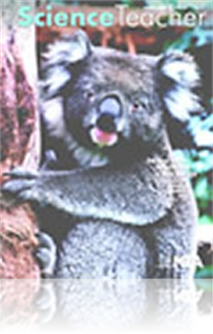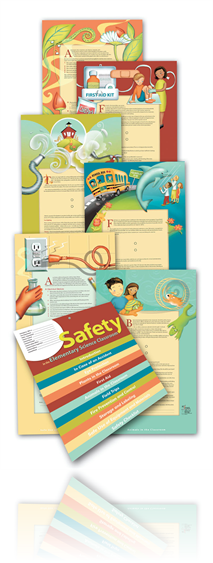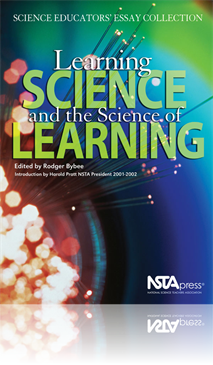All Resources
Book Chapter
Science is Part of the Big Picture
By becoming active learners themselves, teachers recognize that science is part of the “big picture,” and they are able to link newly constructed ideas about active learning to other pedagogical initiatives. It is important not to neglect theory ...
Book Chapter
How Do College Students Best Learn Science?
This paper is based on William Leonard’s “How Do College Students Learn Science? Chapter 1: Effective Teaching and Course Management for University and College Science Teachers,” edited by E. Siebert, M. Caprio, and C. Lyda. Dubuque, IA: Kendal...
Journal Article
An Award-Winning Approach to Lead Safety
A group of teachers use their Toyota Tapestry grant money to address the issue of lead poisoning in the community. Students learn about lead safety and how to test for lead on the school grounds and in their homes....
Journal Article
What Poisoned the Apple Juice? A Gram staining and selective media lab
Although it is difficult to develop short inquiry lab exercises when introducing techniques such as the Gram stain, this scenario gives students authentic problems and helps them pose their own questions. Background material, preparation information,...
NSTA Press Book
Teaching Teachers: Bringing First-Rate Science to the Elementary Classroom
Preservice and novice teachers feeling jittery will find this book full of workable strategies for helping students experience the wonders of science. Classroom veterans will discover new ideas, and science educators will learn how colleagues pass o...
NSTA Press Book
Innovative Techniques for Large-Group Instruction
Size does matter. When you're faced with a class of 50, 150, or even 250 college students, it's tough to head off boredom - much less promote higher-order thinking and inquiry skills. But it's not impossible, thanks to the professor-tested techniques...
NSTA Press Book
Safety in the Elementary Science Classroom (flipchart)
It’s a safety resource your classroom should not be without! As attractive as a poster and as convenient to use as a calendar, the completely updated Safety in the Elementary Classroom flipchart is a quick-read resource on how to prevent or solve s...
NSTA Press Book
Learning Science and the Science of Learning: Science Educators' Essay Collection
Sure, you teach science. But do your students really learn it? Students of all ages will absorb more if you adapt the way you teach to the way they learn. That's the message of this thoughtful collection of 12 essays by noted science teachers. Based ...
Journal Article
Students sample air at their school and generate ideas about how to classify the microorganisms they observe. This investigative, hands-on laboratory activity allows students to gain an awareness of science from a personal perspective and share their...
Journal Article
Intelligent Teaching: Using the theory of multiple intelligences in the inquiry classroom
Incorporating the theory of multiple intelligences (MI) into the science classroom can create a better learning environment for all students. In this article the authors discuss the MI theory and offer suggestions for incorporating it into inquiry-ba...
Journal Article
Pulse Rate Research: Students follow the steps of inquiry to compare carotid and artery pulse rates
This pulse rate study was inspired by observations about how people take their pulses. It exemplifies how the scientific inquiry process can be demonstrated in the classroom. ...
Journal Article
Do Standards Matter? How the quality of state standards relate to evolution instruction
Although most states include evolution instruction in their standards, the teaching of evolution in public schools remains problematic. To create successful science education programs, we must recruit and reward educators who effectively teach this b...
Journal Article
Scope on the Skies: Peeking at the planets
This column focuses on astronomy throughout the year. In this month’s issue learn more about the exciting things happening in our solar system....
Journal Article
Taking Science Dialogue by Storm
One teacher examines classroom discourse through a unit on tornadoes and natural catastrophes....
Journal Article
Educators in Mexico respond to the need for integrating science into other disciplines with a guided-inquiry curriculum module called Adventures on a Deserted Island. The program engages elementary students in an imaginary trip to a deserted island w...
Journal Article
Particle Physics Primer: Explaining the Standard Model of matter
For the past 35 years, scientists have developed a more basic model of the universe—the Standard Model—that specifically addresses the age-old question, "What is the world made of?" The Standard Model of matter provides the most current understan...



